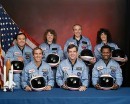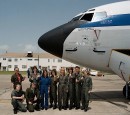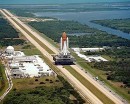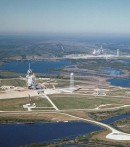Space exploration is a risky endeavor. Since humanity’s dream of literally reaching for the stars began, 15 astronauts and four cosmonauts have been killed during spaceflight, and we’re probably going to see some more as we go forward.
Of the 15 astronauts to be killed after launch, 14 were American, and with the exception of one, Michael J. Adams, they were all killed in space shuttle missions: the Challenger launch disaster and the Columbia re-entry explosion. This week, America and the world looked back at the 35 years that have passed since the Challenger tragedy.
January 28, 1986, was the date when the space shuttle Challenger, one of the four such spacecraft to be assembled by NASA and its partners, was supposed to take off in the 25th overall space shuttle mission. The moment came after several days of delays caused by logistical issues, a malfunction of the exterior access hatch, and bad weather.
The flight was supposed to be the one to take a teacher in space for the first time. New Hampshire middle school teacher Christa McAuliffe would have teamed up with Judith Resnik to make up the second-ever crew with two women in it.
After booster ignition, one minute into the flight, everything seemed just right. Then, 73 seconds after launch, the space shuttle and the rocket carrying it exploded, quickly making it obvious for everyone on the ground that no one on board survived. Aside from McAuliffe and Resnik, there were five others up there: Francis Scobee, Mike Smith, Ron McNair, Ellison Onizuka, and Greg Jarvis.
The investigation that followed revealed that all could be blamed on the failure of an O-ring seal used in the right solid rocket booster. The cold weather before the launch caused it to become stiff and unable to seal the joint it was attached to.
Because of that, during ascent, hot gases started coming out and engulfed the cold exterior of the fuel tank, which eventually ruptured. Then followed the explosion...
January 28, 1986, was the date when the space shuttle Challenger, one of the four such spacecraft to be assembled by NASA and its partners, was supposed to take off in the 25th overall space shuttle mission. The moment came after several days of delays caused by logistical issues, a malfunction of the exterior access hatch, and bad weather.
The flight was supposed to be the one to take a teacher in space for the first time. New Hampshire middle school teacher Christa McAuliffe would have teamed up with Judith Resnik to make up the second-ever crew with two women in it.
After booster ignition, one minute into the flight, everything seemed just right. Then, 73 seconds after launch, the space shuttle and the rocket carrying it exploded, quickly making it obvious for everyone on the ground that no one on board survived. Aside from McAuliffe and Resnik, there were five others up there: Francis Scobee, Mike Smith, Ron McNair, Ellison Onizuka, and Greg Jarvis.
The investigation that followed revealed that all could be blamed on the failure of an O-ring seal used in the right solid rocket booster. The cold weather before the launch caused it to become stiff and unable to seal the joint it was attached to.
Because of that, during ascent, hot gases started coming out and engulfed the cold exterior of the fuel tank, which eventually ruptured. Then followed the explosion...
















